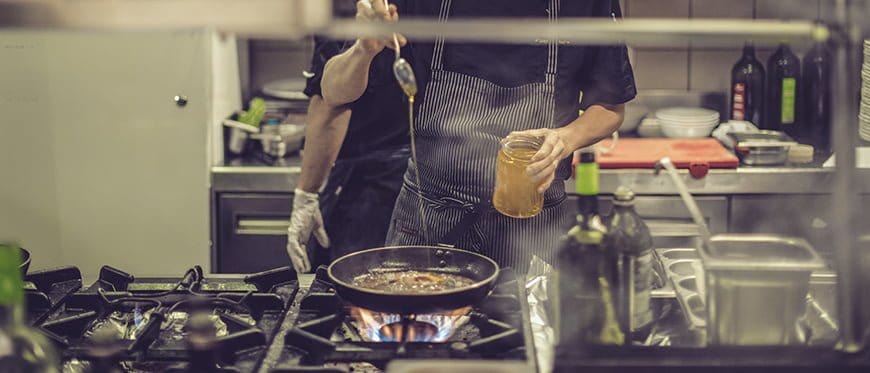You expect to see people in all sorts of fancy suits at high-end hotels and restaurants. But a beekeeper’s suit? Most definitely.
If you look past all the Giorgio Armani-clothed patrons checking in at the Fairmont in Georgetown, the New York Hilton, or the Carmel Valley Ranch in Carmel-by-the-Sea, California, you may also notice a few employees and even guests wearing beekeeper suits. That’s because a downturn in the bee population has inspired an uptick of interest in all things bee-related. Here’s why that’s especially true – and appropriate – in the hotel and restaurant industries.
A taste for sustainability
For such tiny creatures, honey bees (those masters of cross-pollination,) play an enormously important role in the growth of our crops and the health of our planet. But in recent years, the honey bee population has been in serious decline – it dropped 30% in the U.S. during 2017 alone.
Eco-conscious consumers are acutely aware of this serious issue, which gives sustainability-inclined operators yet another chance to stand out and build customer awareness and loyalty. Accordingly, many hotels and resorts now feature their own apiaries, a relatively low-cost yet high-impact way to demonstrate a commitment to the environment. Some have beekeepers on staff, while others outsource the care and nurturing of their hives. Either way, bees are good business when it comes to demonstrating, and not simply claiming, a commitment to sustainability.
Hyperlocal is super-appealing
Of course, all those hives on the roof top garden in the Hilton’s mid-town Manhattan location aren’t just for show. They’re making a daily contribution to pleasing the palates of hotel patrons, who increasingly favor locally sourced and extremely fresh ingredients in their food (and roof-to-table produces an even smaller carbon footprint than farm-to-table, as transport of the honey is literally by foot).
Brand experience is the thing
Beyond the good-corporate-citizen image of sustainability or the fresher-than-thou advantages of hyper-local sourcing, on-site beekeeping is becoming a real brand differentiator – and direct revenue generator – for hotels and restaurants. That’s because brands aren’t just logos these days, they’re total experiences.
Accordingly, the Carmel Valley Ranch offers fresh honey in its gourmet dishes and cocktails – but also offers hands-on experience with feeding, caring for and learning about the bees. Similar experiences can be found at other high-end travel spots like the Calistoga Ranch, also in California. Prices can range for $75 to $150 per guest.
Is beekeeping worth the cost for you?
Of course, not every hotel or bistro can or should be a home to hives. For one, while bees are not a major capital expense, there are costs – estimated by some experts as at least $2000 for a simple set-up and over $16,000 annually for care and maintenance. And then there’s the issue of space – for instance, not every urban hotel has a rooftop garden like the New York Hilton, nor nearby pollinating opportunities as rich as Central Park. Still, even smaller operators may want to consider a co-op apiary, run jointly by several establishments, all of which can share in both the output and the positive image.
Could having your own honey bees sweeten the deal for your customers?
SOURCES
LA Times: http://www.latimes.com/travel/deals/la-tr-bee-hotels-20171025-htmlstory.html
Green Lodging News: http://www.greenlodgingnews.com/new-york-hilton-midtown-debuts-beehives-on-fifth-floor-green-rooftop/
Green Lodging News: http://www.greenlodgingnews.com/marriott-marquis-san-diego-marina-expands-its-bee-program-with-spring-craft-beer-launch/
OpenTable: http://openforbusiness.opentable.com/qas/hive-table-economics-beekeeping-restaurants/
